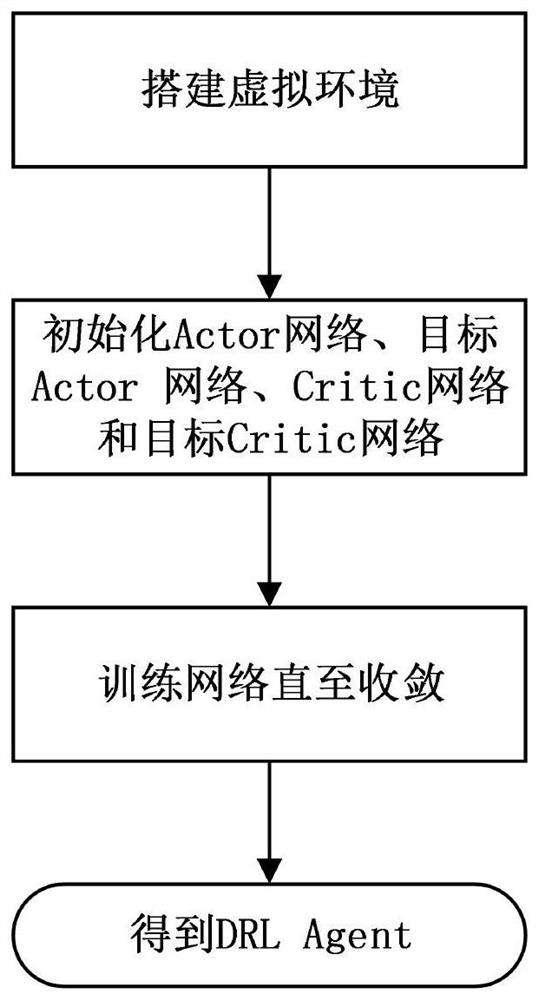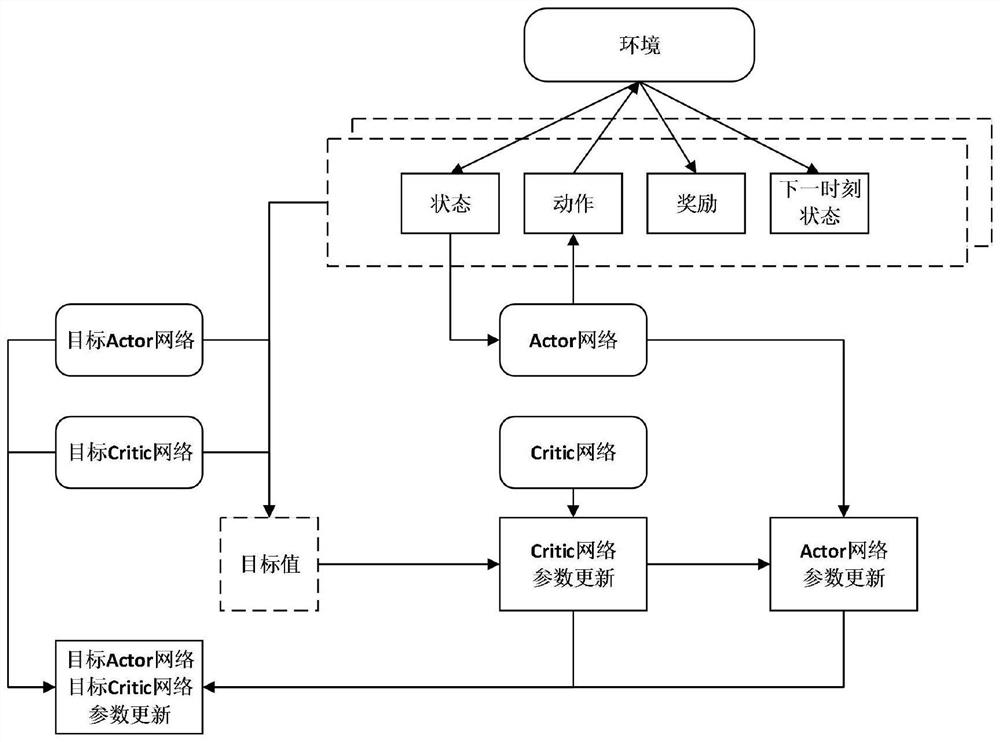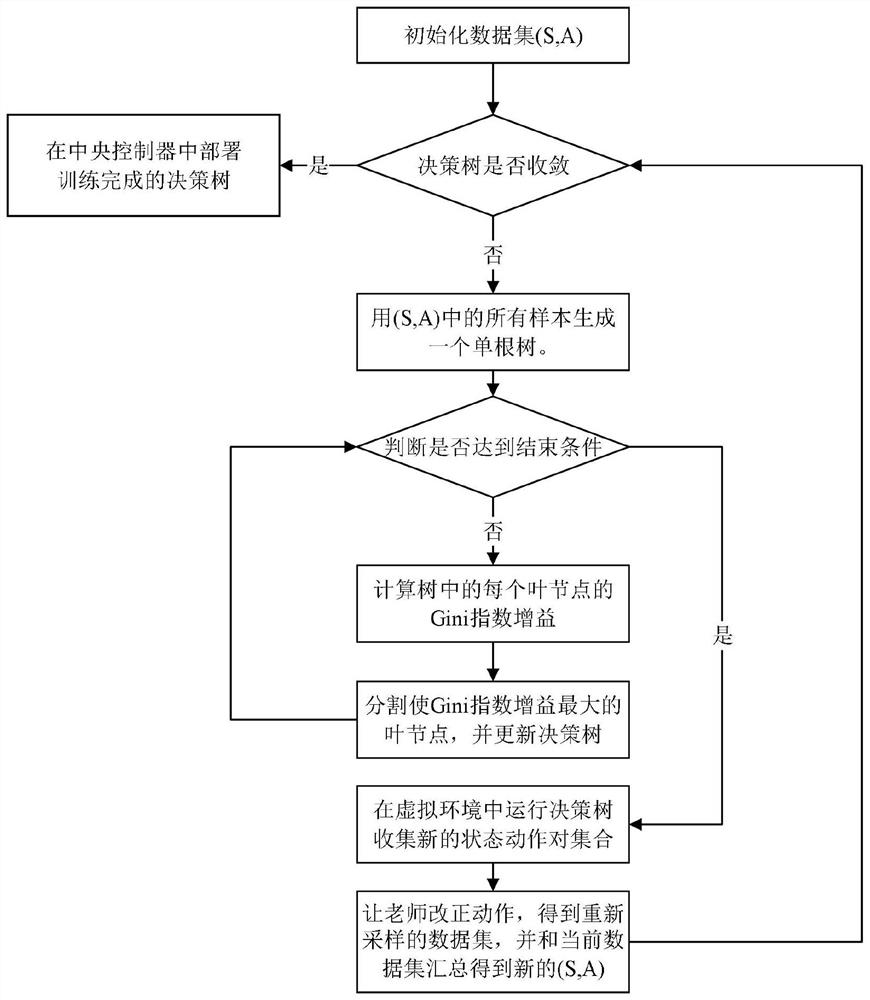A Data Center Network Load Balancing Method Based on Deep Reinforcement Learning
A data center network and reinforcement learning technology, applied in the field of computer networks, can solve problems such as long decision-making time, useless decision-making, bad situations, etc., and achieve the effect of reducing the average completion time and short reasoning time
- Summary
- Abstract
- Description
- Claims
- Application Information
AI Technical Summary
Problems solved by technology
Method used
Image
Examples
Embodiment Construction
[0022] The present invention will be described in detail below with reference to the accompanying drawings and embodiments.
[0023] like figure 1 As shown, it is a flow chart of offline training for updating link weights based on deep reinforcement learning of the present invention. Include the following steps:
[0024] Step 1: Build a virtual network topology environment, specifically: build a data center network topology including m servers and n links, each link l has a weight coefficient w l . For each flow, the source host will be based on the link's weight factor w l to calculate the weights of all available paths for this flow. The weight of each available path is equal to the sum of the weights of all its links. The source host randomly samples paths for this flow from the available paths with probability. The probability is the ratio between the weight of that path and the sum of the weights of all available paths for that flow. The source host uses XPath to f...
PUM
 Login to View More
Login to View More Abstract
Description
Claims
Application Information
 Login to View More
Login to View More - R&D
- Intellectual Property
- Life Sciences
- Materials
- Tech Scout
- Unparalleled Data Quality
- Higher Quality Content
- 60% Fewer Hallucinations
Browse by: Latest US Patents, China's latest patents, Technical Efficacy Thesaurus, Application Domain, Technology Topic, Popular Technical Reports.
© 2025 PatSnap. All rights reserved.Legal|Privacy policy|Modern Slavery Act Transparency Statement|Sitemap|About US| Contact US: help@patsnap.com



